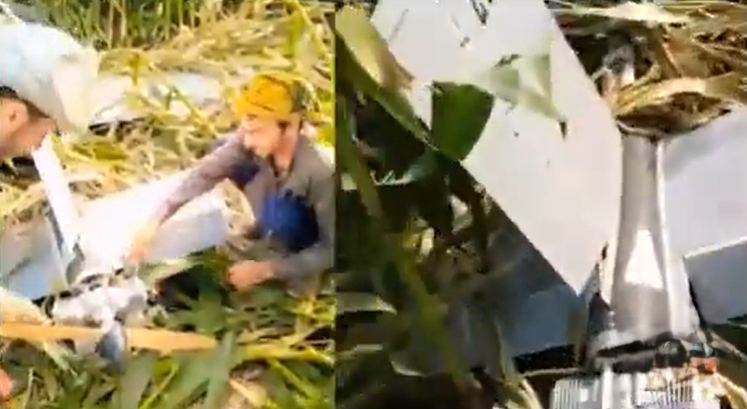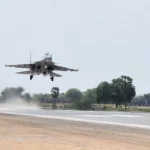In one of the most bizarre moments of the May 2025 India–Pakistan conflict, a Pakistani farmer named Sufyan from Sialkot became a national sensation after he shot down a drone flying over his fields—only to later learn it belonged to Pakistan itself. The drone, identified as a Yiha-II (serial no. 24-043), was a Turkish-designed high-precision UAV jointly developed by Turkey’s Baykar and Pakistan’s defense industry.
The incident occurred during Operation Sindoor, a four-day military escalation that began on May 7, following a terrorist attack in Pahalgam, Jammu and Kashmir, which claimed 26 civilian lives on April 22. In retaliation, India launched air strikes on terror infrastructure across the border, prompting Pakistan to initiate a large-scale drone offensive involving over 300 Turkish-made drones, including the Yiha-III and Asisguard Songar models.
Many of these drones, however, failed to reach Indian territory. Technical malfunctions and inadequate operational handling resulted in several crashes within Pakistani territory itself—one of which brought fame to Sufyan. Mistaking the low-flying drone as an Indian incursion, he fired at it using his personal rifle. The drone crashed in his field, triggering a crowd of locals to attack the wreckage with sticks, stones, and even slippers, celebrating what they thought was a patriotic act.
Unaware of the drone’s origin, the Pakistani Army initially praised Sufyan’s “heroism” and reportedly offered him a reward. However, the celebration turned into embarrassment after investigations revealed that the drone was a Pakistani Yiha-II—a $30,000 precision loitering munition equipped with Turkish OMTAS anti-tank missile technology and designed for extended endurance and high maneuverability.
In a further twist of irony, a local news reporter mocked Indian drones as “weak and worth scrap material” during the coverage of the incident, only to learn later that the wreckage belonged to Pakistan’s own prized UAV fleet.
The Yiha-II incident was not isolated. Reports confirmed at least four similar drone failures within Pakistani airspace during the conflict. Analysts have criticized the operational readiness of Pakistan’s UAV fleet, pointing to poor operator training, maintenance issues, or deeper systemic flaws. “These crashes suggest either the drone isn’t as reliable as advertised or Pakistan isn’t ready to handle it,” noted a Pakistani defense expert on a forum.
Meanwhile, India’s Army Air Defence (AAD) units effectively countered the drone offensive using a mix of upgraded Cold War-era guns and the indigenous Akashteer system. Indian forces neutralized hundreds of Pakistani drones, including Yiha-III and Songar models, across Punjab, Jammu and Kashmir, and Rajasthan. Many of these drones were recovered intact, thanks to India’s advanced jamming and counter-drone capabilities.
Air Marshal AK Bharti, commenting on the performance of Pakistan’s drone fleet, remarked, “These so-called cutting-edge drones were no match for our battle-proven systems.” The Akashteer system, likened to Israel’s Iron Dome for its low-altitude threat interception, played a decisive role in denying Pakistan’s UAVs any strategic edge.
As for Sufyan, undeterred by the revelation, he was last seen taking selfies with the wrecked drone before it was hauled away by the Pakistani Army. The incident has become symbolic of the chaos and confusion that plagued Pakistan’s drone strategy during the brief but intense conflict.
The fallout has also hit Turkey’s defense export ambitions, with the poor performance of the Yiha-II in the India-Pakistan conflict casting doubts over its credibility in high-threat environments. For Pakistan, the episode has raised serious questions about its ability to deploy advanced UAV systems effectively in real combat scenarios.













